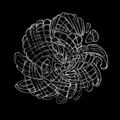Template:Selected anniversaries/September 24: Difference between revisions
No edit summary |
No edit summary |
||
| Line 65: | Line 65: | ||
||1916: Theodore Puck born ... geneticist. Puck was an early pioneer of "somatic cell genetics" and single-cell plating ( i.e. "cloning" .) This work allowed the genetics of human and other mammalian cells to be studied in detail. Also, Puck's team found that humans had 46 chromosomes rather than 48 which had earlier been believed. Pic search yes: https://www.google.com/search?q=Theodore+Puck+geneticist&oq=Theodore+Puck+geneticist | ||1916: Theodore Puck born ... geneticist. Puck was an early pioneer of "somatic cell genetics" and single-cell plating ( i.e. "cloning" .) This work allowed the genetics of human and other mammalian cells to be studied in detail. Also, Puck's team found that humans had 46 chromosomes rather than 48 which had earlier been believed. Pic search yes: https://www.google.com/search?q=Theodore+Puck+geneticist&oq=Theodore+Puck+geneticist | ||
||1918: Michael J. S. Dewar born ... American theoretical chemist who developed the Dewar-Chatt-Duncanson model. Dewar is known most famously for the development in the 1970s and 1980s of the Semi-empirical quantum chemistry methods, MINDO, MNDO, AM1 and PM3 that are in the MOPAC computer program, and which for the first time enabled the quantitative study of the structure and mechanism of reaction (transition state) of many real (i.e. large) systems. Pic. | |||
||1920: Peter Carl Fabergé dies ... goldsmith and jeweler. Pic. | ||1920: Peter Carl Fabergé dies ... goldsmith and jeweler. Pic. | ||
| Line 80: | Line 82: | ||
||1940: Westinghouse patent application for the Nimatron, a machine to play the game of Nim, is approved. Created by Eduard Condon, Edgewood Tawney, Gerald Tawney, and Willard Dorr, the machine would be featured in the Westinghouse exhibit at the 1940 World's Fair. The machine played 100,000 games at the fair, winning about 90,000. Most of its defeats were apparently administered by attendants to demonstrate that possibility. When the machine did lose it would "present its opponent with a token coin stamped with the words 'Nim Champ'". https://fr.wikipedia.org/wiki/Nimatron | ||1940: Westinghouse patent application for the Nimatron, a machine to play the game of Nim, is approved. Created by Eduard Condon, Edgewood Tawney, Gerald Tawney, and Willard Dorr, the machine would be featured in the Westinghouse exhibit at the 1940 World's Fair. The machine played 100,000 games at the fair, winning about 90,000. Most of its defeats were apparently administered by attendants to demonstrate that possibility. When the machine did lose it would "present its opponent with a token coin stamped with the words 'Nim Champ'". https://fr.wikipedia.org/wiki/Nimatron | ||
||1945: Hans Geiger dies ... physicist and academic, co-invented the Geiger counter. | ||1945: Hans Geiger dies ... physicist and academic, co-invented the Geiger counter. Pic. | ||
||1957: President Dwight D. Eisenhower sends 101st Airborne Division troops to Little Rock, Arkansas, to enforce desegregation. | ||1957: President Dwight D. Eisenhower sends 101st Airborne Division troops to Little Rock, Arkansas, to enforce desegregation. | ||
||1960: USS Enterprise, the world's first nuclear-powered aircraft carrier, is launched. | ||1960: USS ''Enterprise'', the world's first nuclear-powered aircraft carrier, is launched. | ||
||1967: Pauline Sperry dies ... mathematician. Sperry was an active Quaker and involved in various humanitarian and political causes. At the height of McCarthyism, the Board of Regents required university employees to sign a loyalty oath. Sperry, Hans Lewy, and others who refused were barred from teaching without pay in 1950. In the case Tolman v. Underhill, the California Supreme Court ruled in 1952 the loyalty oath unconstitutional and reinstated those who refused to sign. Sperry was reinstated with back pay and the title emeritus associate professor. Pic. | ||1967: Pauline Sperry dies ... mathematician. Sperry was an active Quaker and involved in various humanitarian and political causes. At the height of McCarthyism, the Board of Regents required university employees to sign a loyalty oath. Sperry, Hans Lewy, and others who refused were barred from teaching without pay in 1950. In the case Tolman v. Underhill, the California Supreme Court ruled in 1952 the loyalty oath unconstitutional and reinstated those who refused to sign. Sperry was reinstated with back pay and the title emeritus associate professor. Pic. | ||
Revision as of 14:54, 23 May 2019
1054: Composer, mathematician, and astronomer Hermann of Reichenau dies. He wrote a treatise on the science of music, several works on geometry and arithmetic, and astronomical treatises (including instructions for the construction of an astrolabe, at the time a very novel device in Western Europe).
1501: Gerolamo Cardano born. He will be one of the most influential mathematicians of the Renaissance.
1624: Renaissance-era mechanical soldier Clock Head uses Gnomon algorithm functions to fight crimes against mathematical constants.
1625: Mathematician and politician Johan de Witt born. He will derive the basic properties of quadratic forms, an important step in the field of linear algebra.
1769: Polymath and crime-fighter Johann Heinrich Lambert discovers new type of Gnomon algorithm functions which convert map projections into optical projections. These projections will quickly find applications in scrying engine technology.
1934: Writer and peace activist John Brunner born.
1937: Alice Beta Paragliding published. Many experts believe that the illustration depicts Beta infiltrating the ENIAC program.
1938: Mathematician Lev Schnirelmann dies. He proved that any natural number greater than 1 can be written as the sum of not more than C prime numbers, where C is an effectively computable constant.
1999: Writer, editor, and actor George Plimpton publishes his account of personally committing math crimes "for the participatory journalistic experience."
2016: Spiral 2 voted Picture of the day by the citizens of New Minneapolis, Canada.









